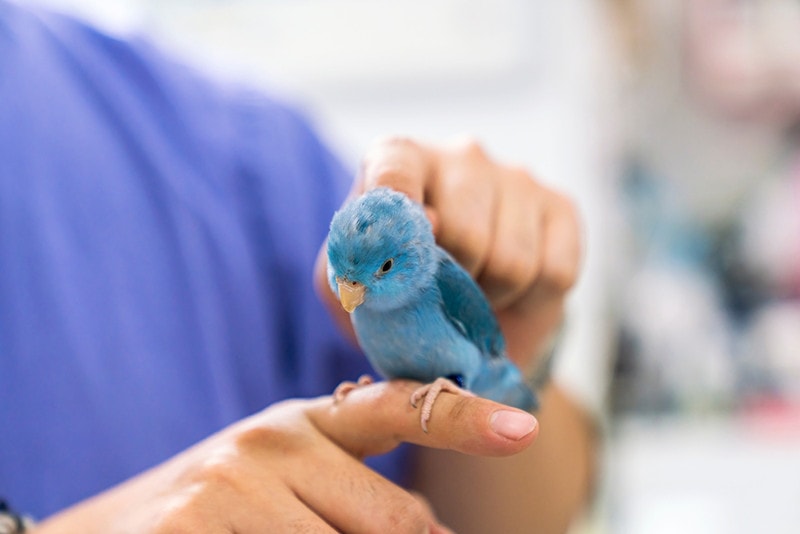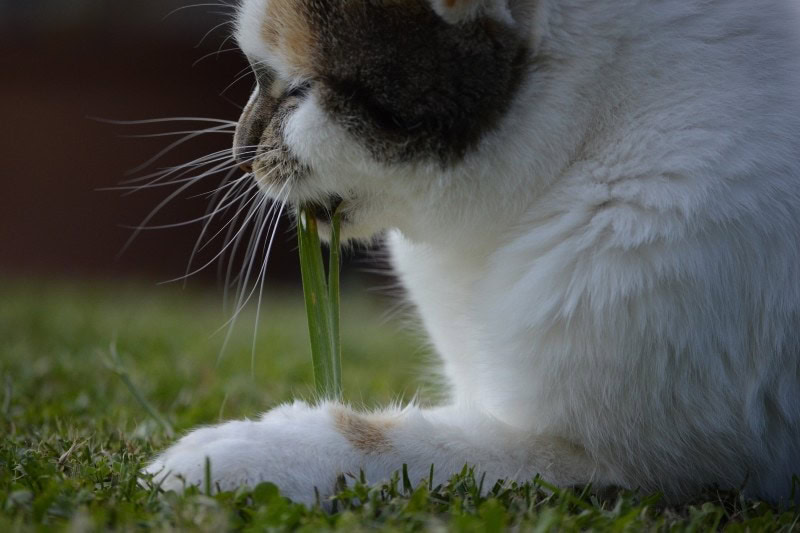VET APPROVED

The information is current and up-to-date in accordance with the latest veterinarian research.
Learn more »Just because you feel like cuddling up with your pet doesn’t mean that they enjoy the contact. Birds are unique animals with particular personalities. Some parrots love the contact and attention they get from their owners, while others prefer to be left alone. If your pet bird isn’t immediately interested in your pats, try training them to establish trust and get them used to your touch. Making them feel comfortable and safe is the most important aspect of the petting process.
If properly desensitized and positively trained, bird species like parrots, parakeets, and budgies are more likely to allow touching than other birds. As you continue to practice this behavior, keep your training sessions short and pay attention to their body language so that you can stop if they start feeling overwhelmed.

The 9 Tips for Safely Petting a Bird
Before you learn how to pet your bird the right way, keep in mind that all birds are individuals. Some bird lovers spend months trying to get their birds to accept their touch without success. Just how not all humans enjoy physical contact with others, neither do all birds.
Avoid trying to pet a bird that isn’t your own; kindly understand that most birds require some level of trust before letting anybody get close to them. A complete stranger isn’t going to have a lot of success and will most likely frighten them. If you do own the bird, you must give them some time to warm up to you and be willing to accept their boundaries. Desensitization is a slow, long, and important process to ensure the bird is comfortable and fear-free.
1. Keep a Calm Demeanor
Birds can hear well over a limited frequency range that is different for each species. Their eyesight is very good. Keep yourself calm as you approach them, and make sure that they see you as you come closer. Speak to your pet bird in a soft voice before reaching your hand out. Make slow movements, so you don’t spook them. The more they warm up to your presence, the higher chance of success.
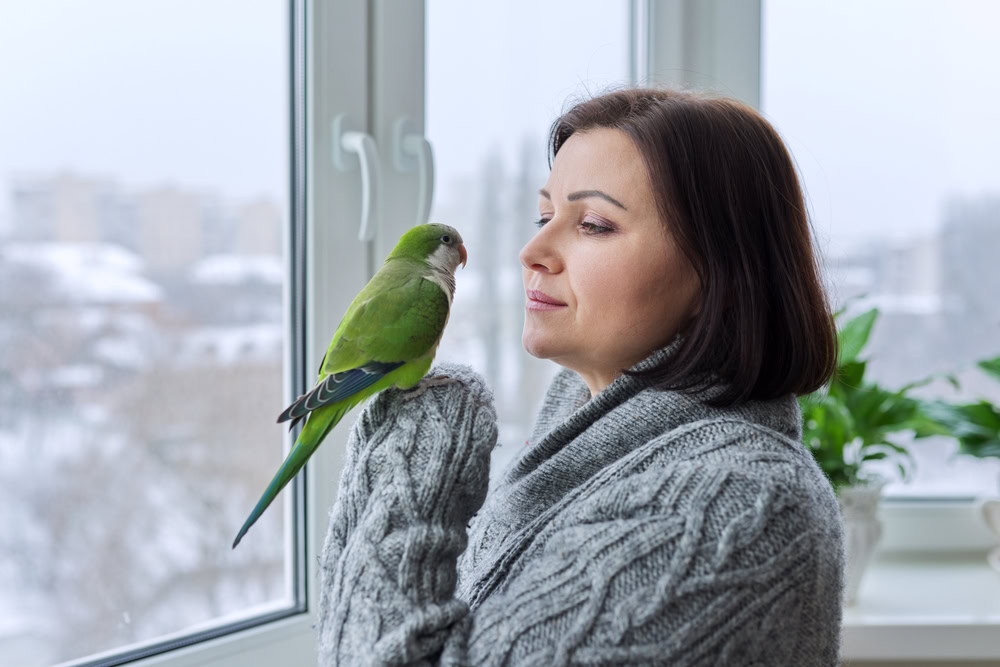
2. Assess the Bird’s Body Language
Bird body language can tell you a lot about how to approach a situation. Like other species, birds communicate in a lot of nonverbal ways, so you have to watch how they react. Stiff bodies and staring eyes are a good indication that the bird is uncomfortable. Weary birds may also lead away from you or push you away, attempt to bite you, flop their wings, or make a lot of noise.
Birds that close their eyes, turn their heads, or have their tail feathers bent over one another and a relaxed body posture are indications that they are comfortable. These are signs that the bird trusts you and is comfortable with you as you approach.
3. Hand Feed Them First
An important part of desensitizing your pet bird to allow touching is to win their trust. A great way of doing this is by pairing your hand and presence with a positive experience like their favorite treat. Take time every day to hand-feed your bird at least a portion of their diet. Simply offer them the high-value food item between your fingers at a distance they can take to allow them to approach you first. If you are lucky, the bird will stand on your hand or finger.
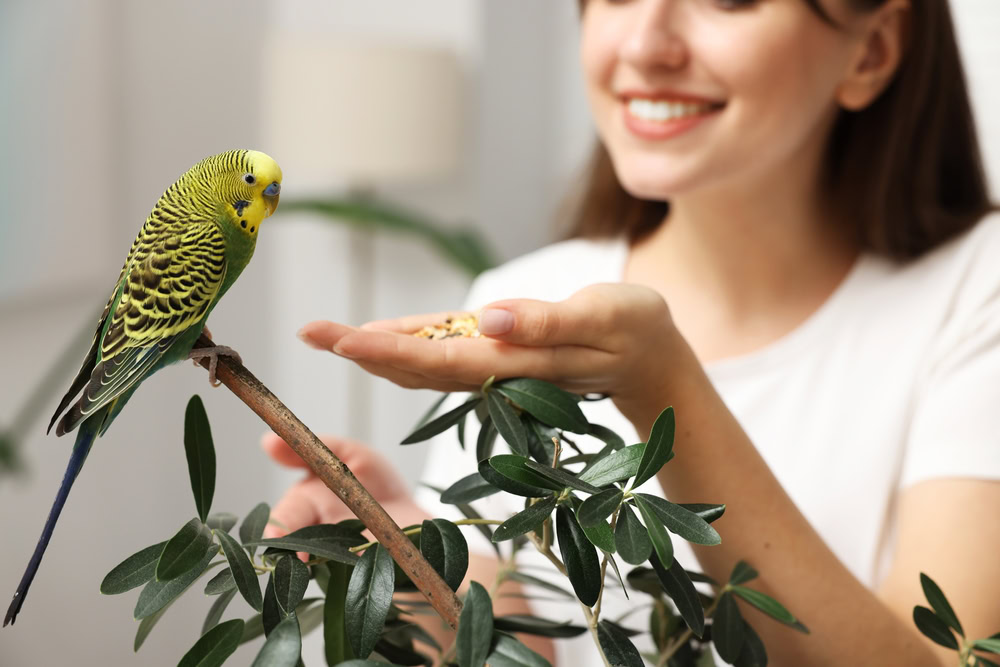
4. Know Where to Pet Them
As tempting as their feathery, fluffy chests are, you don’t want to pet a bird below the neck. For many species, this is the sign of a breeding ritual. Try to keep your fingers around their head to keep behavioral problems to a minimum.
5. Start at the Bird’s Beak
A bird experiences a lot through their beak. They are tools they use to taste, climb, feel, and crack open hard objects. Start training your bird for petting by gently touching their beak and allowing them to get used to you.
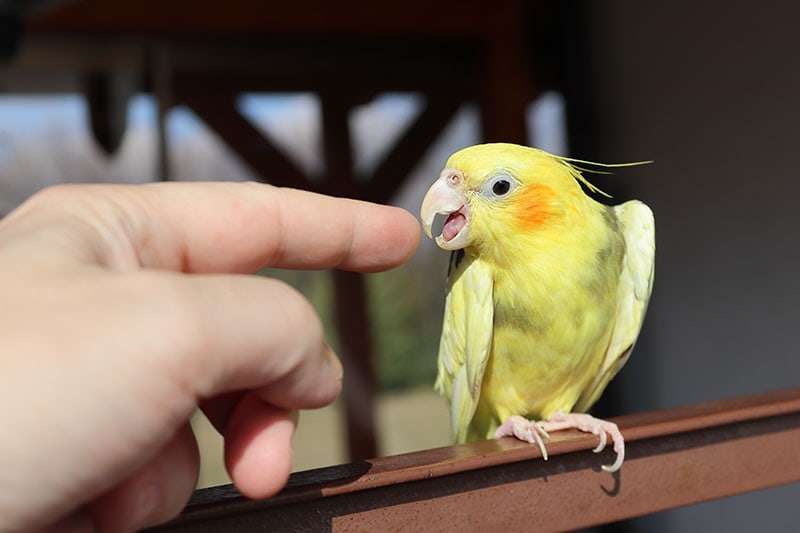
6. Go in the Direction of the Feathers
Birds have feathers that travel in one direction. Going against the natural direction of their feathers could hurt the birds and turn them off from future petting sessions. Always move your fingers in the same direction and use a gentle touch to show them that you won’t hurt them.
7. Increase Time as they Relax
Start petting your bird in very short increments and only increase the time after they start to become more relaxed around you. When you move away from the beak, start at the back of their head or under their beaks without moving below the neck. Remember to ensure you offer them some treats for calm behavior and allowing your touch.
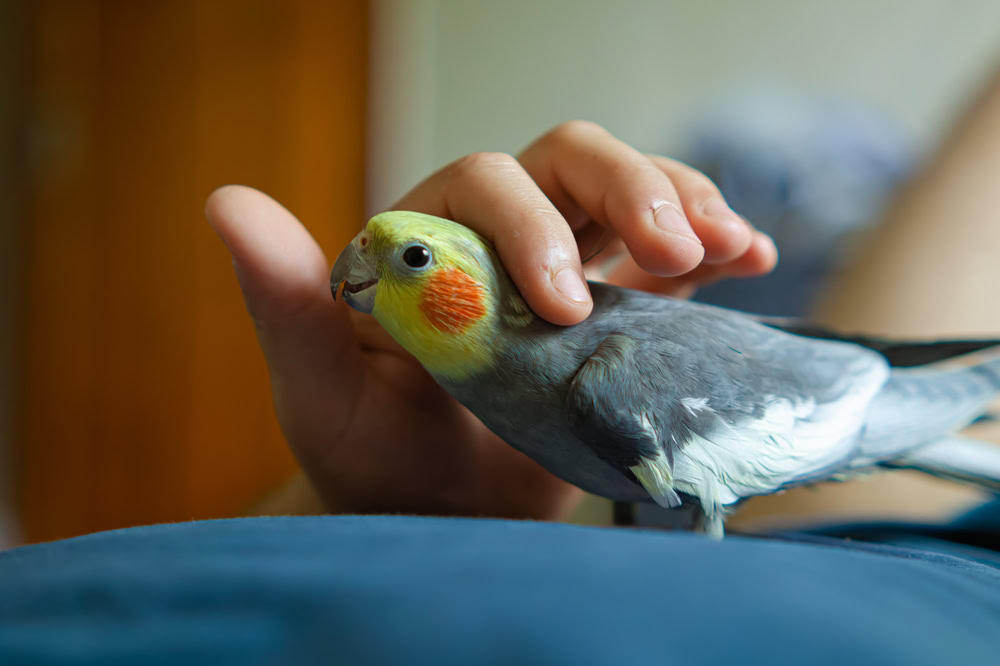
8. Remain Patient
Birds require a bit of time to get to know you and trust you. The more they feel safe, the more likely they are to allow you to pet them. Over time, and after establishing a bond, some birds have been known to love snuggles and prefer to spend time by their owner’s side.
9. Respect Their Boundaries
A very important part of being a respectful pet owner is to ensure they enjoy a life free from stress and fear. Their physical and mental well-being should always be our priority. While we can achieve a lot with positive reinforcement, patience, and time, we should always make sure our petting is a positive experience for them and not something forced. Celebrate every small win and do not push their boundaries; like with any relationship, trust and respect are a must.
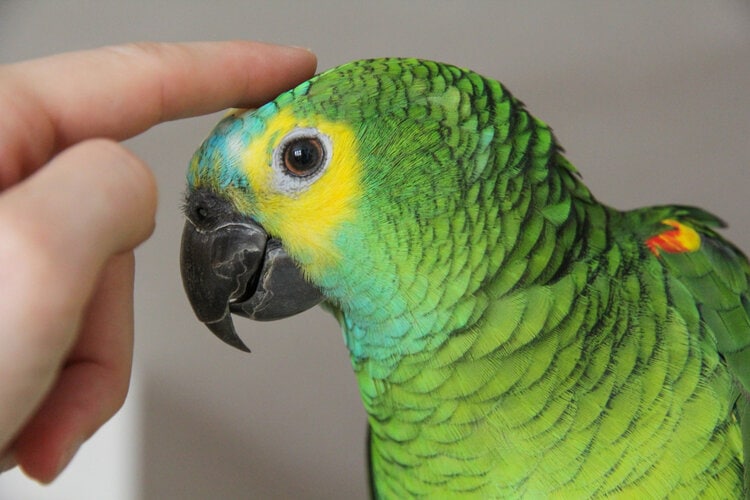

Final Thoughts
While it can be a little heartbreaking, some bird owners have to accept that they have a bird that is full of independence and enjoys its own space. Affection is nice, but not as nice as knowing that our pets are at their happiest. You can always work on making your pet more comfortable with handling them. Even if they don’t tolerate it for long periods, it is possible to gain enough trust that they’ll tolerate it for quick bouts.
See also:
- What Spot Do Parrots Like to Be Petted? (Guide With Infographic)
- Why You Should Not Pet a Bird’s Wings: Reasons & Useful Tips
Featured Image Credit: thirawatana phaisalratana, Shutterstock
